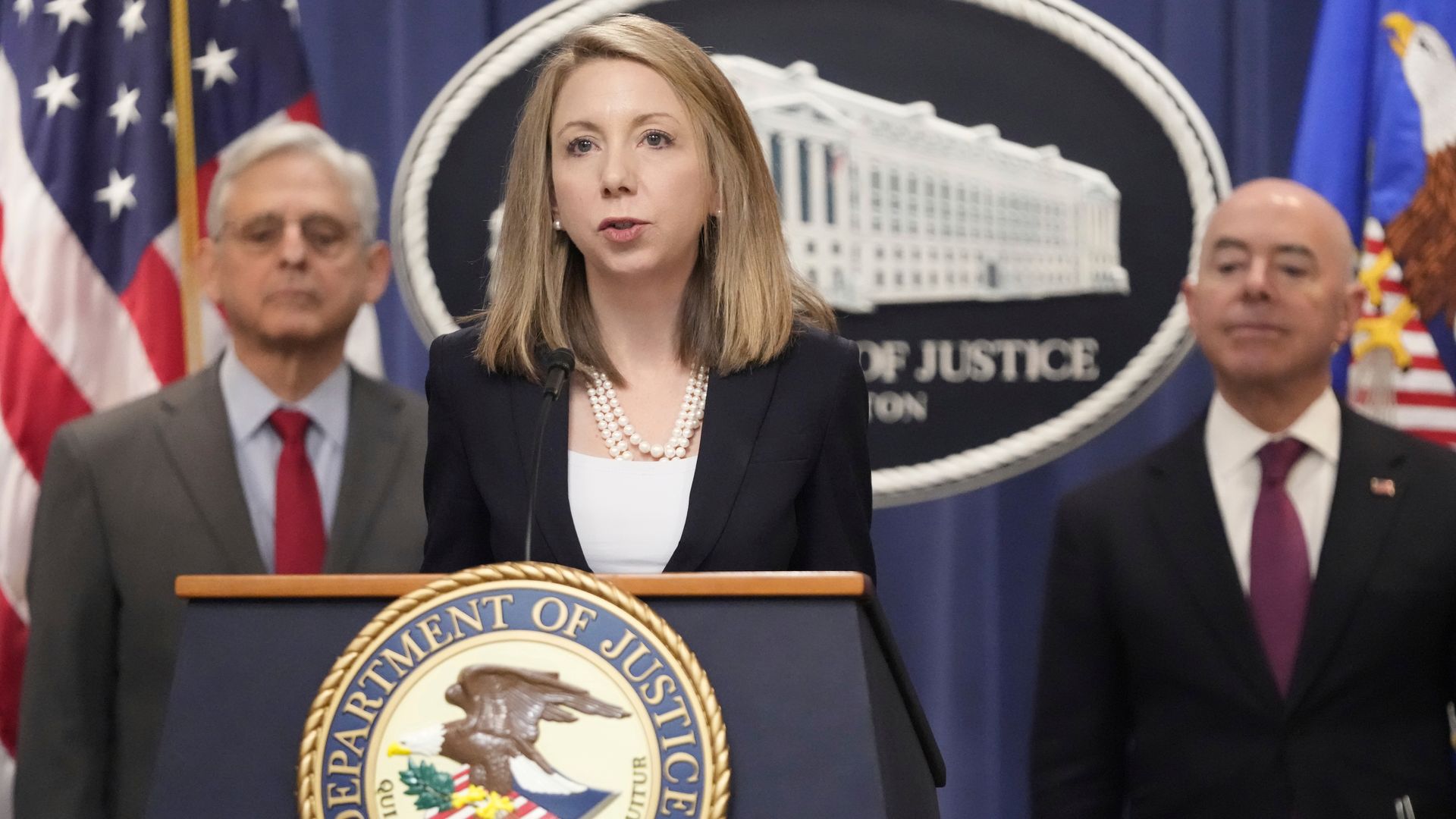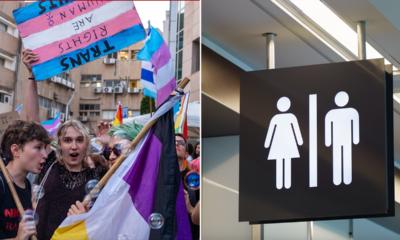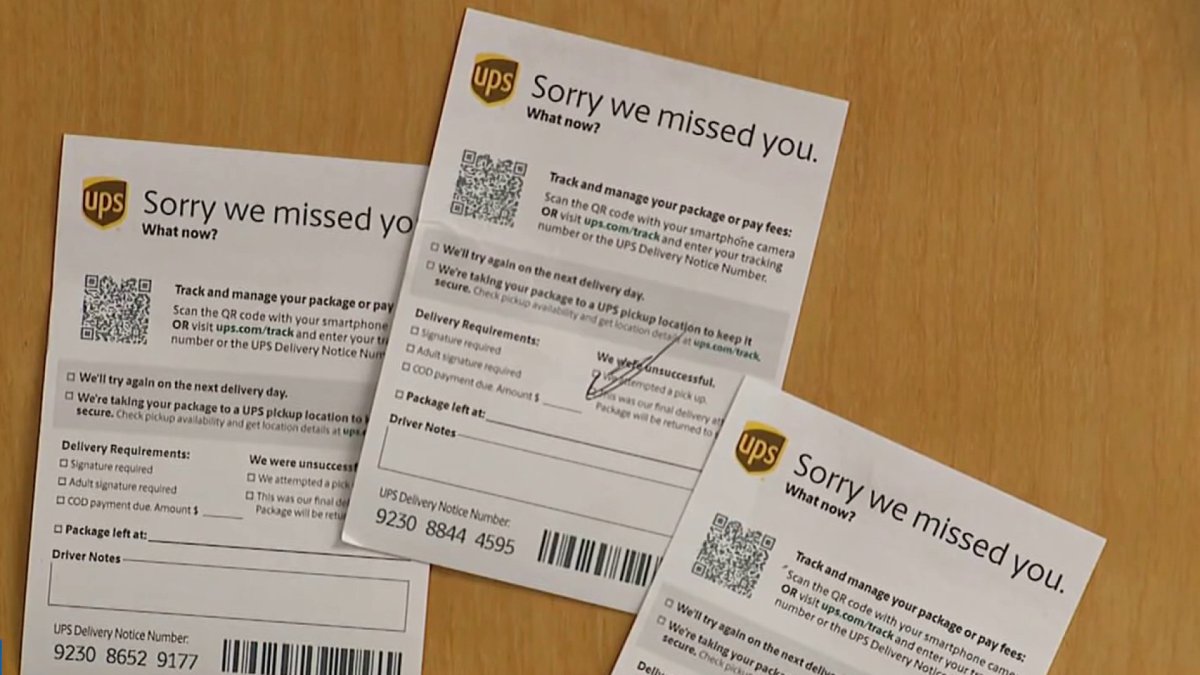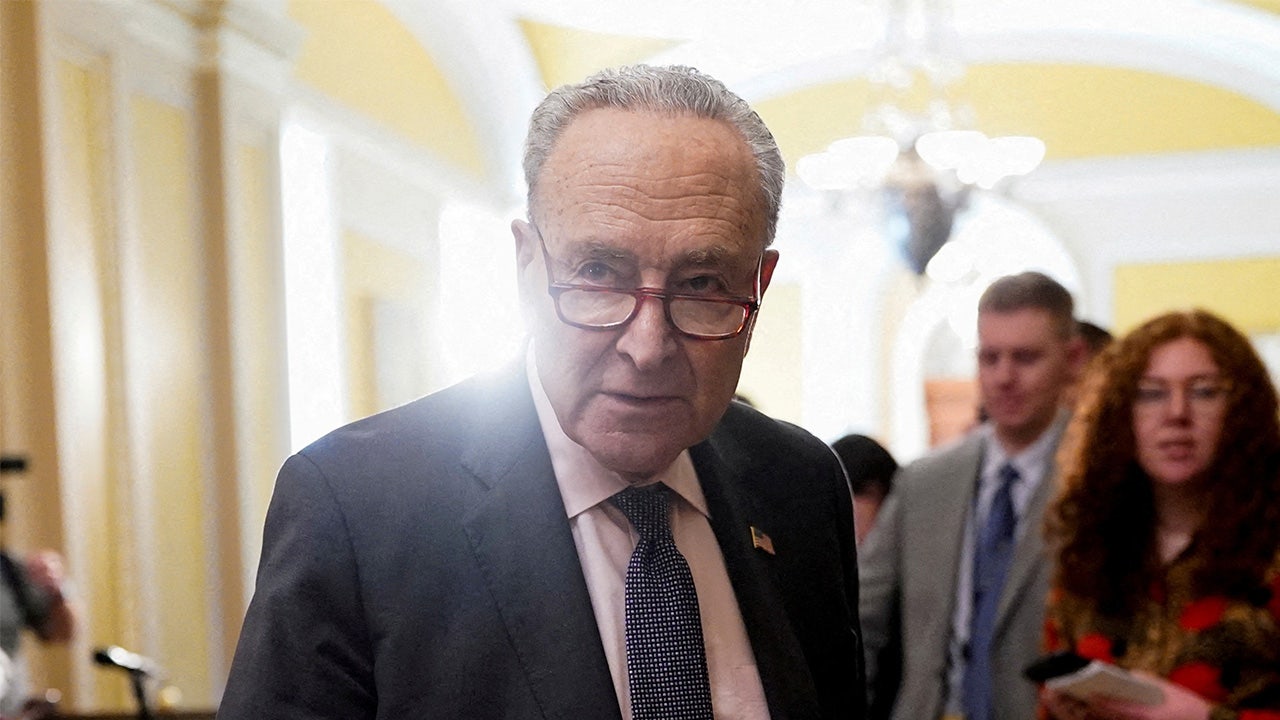Virginia
A 5-point plan for Virginia’s data centers – Virginia Mercury

None of the sessions at last month’s Virginia Clean Energy Summit (VACES) in Richmond were devoted to data centers, but data centers were what everyone was talking about. Explosive growth in that energy-hungry industry has everyone — utilities, the grid operator, and the industry itself — scrambling to figure out how Virginia will provide enough new power generation and transmission. And, worryingly, no one seems to have an answer.
Or rather, lots of people have answers, but none of them achieve the trifecta of providing data centers the energy they need while continuing the explosive growth trajectory that state leaders seem to want, and at the same time keeping Virginia’s transition to zero-carbon energy on track. Something has to give. Which will it be?
With no action, the “give” comes from the people of Virginia. Residents will see growth they don’t want, pay for infrastructure that doesn’t serve them, suffer from pollution that is not of their making, and see their tax dollars subsidize an industry that employs almost no one.
The no-action option isn’t a solution
But first, a quick recap. Northern Virginia already has the largest concentration of data centers in the world. As of late 2022, data center electricity demand had grown to 21% of Dominion Energy Virginia’s entire load, and likely an even larger percentage of the load of Northern Virginia Electric Cooperative (NOVEC), which serves much of Data Center Alley.
Worse, the industry is just getting started. Grid operator PJM’s grid forecast projects Dominion’s data center load will quadruple over the next 15 years, while NOVEC’s will rise to ten times what it is today. Other rural electric cooperatives in Virginia told PJM they also expect a huge demand from data centers, a prediction confirmed by news that Amazon Web Services expects to spend $11 billion on data centers in Louisa County, in the territory of Rappahannock Electric Cooperative.
In its Integrated Resource Plan (IRP) filing in May of this year, Dominion told the State Corporation Commission (SCC) that due to data center demand, it plans to ignore Virginia’s commitment to achieving a zero-carbon economy. Instead of increasing the pace of renewable energy and storage construction, it wants to keep coal plants running past their mandatory retirement dates and even build new gas combustion turbines as well as billions of dollars’ worth of new transmission infrastructure. The result will be higher costs for consumers and massive increases in carbon emissions, violating the carbon-cutting mandate of the Virginia Clean Economy Act.
Bill Murray, Dominion senior vice president for corporate affairs and communications,, seems to have tried for a more conciliatory tone in talking to Senate Finance Committee members last week about the challenge of meeting data center load. Murray is quoted in the Richmond Times-Dispatch telling members, “We have worked through these challenges before.” Isn’t that reassuring? If only it were true.
If Dominion’s response has been less than adequate, others have not done better. PJM, already woefully behind on approving new renewable energy generation interconnection requests, blames states for wanting clean energy rather than doing its own job to help the market provide it. A PJM representative told the VACES audience utilities should just keep their fossil fuel plants running until it can work its way through the backlog, hopefully by 2026.
Virginia’s Data Center Coalition doesn’t see energy as its problem to solve, and its members seem strangely content to run on fossil fuels. Others in the industry are trying to do better, though. Whole conferences are devoted to the subject of lowering the carbon footprint of data centers. In addition to a pledge to use renewable energy 24/7, Google has achieved remarkable levels of energy efficiency (for you nerds, they claim an average PUE of 1.1). Google, however, has only a small footprint in Virginia.
Amazon Web Services, the biggest data center company in Virginia, buys renewable energy but is not striving for the 24/7 standard. AWS’ senior manager for energy and environment public policy, Craig Sundstrom, told a panel at VACES that by 2025, AWS will have offset its use of grid power with purchases of renewable energy on the PJM grid, and he pointed to 16 solar projects the company has in operation or under development in Virginia. That’s a great start, but it’s only a start. With no battery storage in the mix, AWS will still be using grid power from fossil fuels most of the time.
Why are ratepayers footing the bill for Virginia’s data center buildout?
Wishful thinking will not solve this
So what should data centers do? Or, since most of the industry doesn’t want to do anything, what should Virginia utilities and policymakers do?
VACES conference attendees had a few suggestions. The nuclear energy true believers were there, touting small modular reactors (SMRs). Gov. Youngkin and many Virginia legislators are fans of nuclear, but the timing was unfortunate. A few weeks after VACES, the first SMR in development — the one that’s supposed to prove how great the technology is — lost its customers due to increasing cost projections. The chances of SMRs ever outcompeting solar paired with storage seems more remote than ever.
Green hydrogen, a vital part of our energy future, has cost and availability problems right now, too. Microgrids powered by hydrogen fuel cells would be a fantastic solution. I’ll set my alarm for 2030 to check on how that’s going.
Meanwhile, representatives of Washington Gas and Roanoke Gas earnestly tried to sell the VACES audience on the virtues of methane captured from wastewater treatment plants and hog waste cesspools like those at Smithfield Farms’ concentrated animal feeding operations (CAFOs).
Some of this so-called renewable natural gas (RNG) may be available now, but it is exceedingly hard to imagine there would ever be enough to supply even the back-up generators at Virginia data centers, to say nothing of meeting 21% (and growing!) of Dominion’s total load. North Carolina has incentivized pig waste biogas for many years, but it still makes up only a fraction of a percentage point of that state’s energy supply.
To hear the gas folks tell it, though, RNG is not just carbon-neutral but carbon-negative, achieving this Holy Grail status by capturing and burning methane that would otherwise escape into the air. They assert that mixing a mere 5% of this biogas into ordinary fossil methane will effectively decarbonize the entire pipeline. In other words, we should be glad CAFOs are such an environmental disaster.
That dog won’t hunt. If gas companies get to claim the virtues of pig waste biogas, they also have to account for its vices, including the greenhouse gas emissions and other pollution associated with methane capture and leakage throughout collection and delivery.
Also, if factory farming is the answer to the needs of data centers, God help us. Maybe the tech industry should move to Iowa.
A better approach
One of the better ideas coming out of VACES was a simple one: if clean energy can’t come to the load, the load should go to clean energy. Iowa, in fact, is just one of several states that get more than half their electricity from wind and solar. And indeed, some large tech companies are looking at separating their operations between those that are time-critical and need to be next to load centers and those that don’t, with the latter able to take advantage of better climates and greener energy.
Tech companies don’t necessarily have to look beyond Virginia to take their operations to clean energy. Nothing prevents them from locating in rural counties where they can surround their data centers with fields of solar panels and banks of batteries. For that matter, a large operator like AWS could buy offshore wind, starting with the Kitty Hawk project that is still seeking a customer.
Many Virginia data center operators, though, will still need to access the PJM market. They should be expected to follow Google and buy renewable energy and storage to meet at least most of their electricity needs on a 24/7, hourly matching basis. Given the PJM bottleneck, they will need a grace period of two or three years. After that: no renewable energy, no tax subsidy.
Building more Virginia data centers requires increased pollution controls
That’s point one of our data center strategy. Point two: data centers that have to source their own renewable energy will be motivated to use less energy, but Virginia can also set an energy efficiency minimum they should meet to qualify for Virginia’s tax subsidies. They need not match Google’s success, but they should come close.
Point three: Dominion claimed in its IRP that it could not build enough solar itself to meet the soaring data center demand; this was its excuse for keeping expensive coal plants running beyond their planned retirement dates. If Dominion can’t build it, let others do it. The General Assembly should remove the 35% limit on the amount of solar and storage capacity that third-party developers can provide. A little free-market competition never hurt anyone.
Point four: If the growth of data centers requires utilities to invest more for energy generation and power lines, the data centers should be the ones paying the extra cost, not residential customers.
Point five: Leaders should not separate the joy they feel in attracting data centers from the pain their constituents feel in living with data centers and transmission lines, breathing pollution from diesel back-up generators and having the quality and quantity of their freshwater resources threatened. Data center developers and revenue-hungry local governments are not the appropriate decision makers for development at this scale. The administration should convene a task force with the job and power to do comprehensive planning for data center siting, development and resource use.
Adopting these five points will not stop data centers from locating in Virginia, and that isn’t the goal. What it will ensure is that the development is well planned out, fair and equitable to everyone.

Virginia
Governor amends Virginia's budget bill to increase rainy-day reserves over changes in Washington

RICHMOND, Va. — Republican Gov. Glenn Youngkin said on Monday that he hoped to bolster Virginia’s rainy-day fund by $300 million in light of economic uncertainty surrounding the White House’s overhaul of federal jobs and its impact on the state’s workforce.
At a news conference, Youngkin announced he had more than 200 amendments to a bipartisan budget bill adopted last month by the Virginia General Assembly, including trimming state spending to add additional funds to Virginia’s coffers.
The $300 million would be on top of nearly $295 million already slated to be set aside over the biennium. Youngkin said the reserved revenue would give Virginia a cushion of $5 billion.
“It enables us to feel confident that if there is a bump in the road, we can deal with it,” he said.
Youngkin’s announcement comes after a mix of roughly 1,000 Virginian federal workers and contractors have filed claims for unemployment since the end of January after President Donald Trump and adviser Elon Musk began cutting jobs and programs in Washington, state officials have said.
In addition to the budget amendment, Youngkin’s administration has created a job website and encouraged impacted workers to explore other opportunities in Virginia.
“President Trump has been very, very clear, and he has not shied away from the fact that there could and may be economic disruption in the short term,” Youngkin said. “As he resets things in Washington, I agree with him that we will have long-term opportunity, and that is going to be good for Virginia.”
Before 2025, Virginia was home to roughly 315,000 federal workers, according to the Metropolitan Washington Council of Government. In the past few years, the state has done well economically — its state budget had a multibillion-dollar surplus, and more people were moving to the state than moving away, officials have said.
But, as the Democratic-led legislature gaveled out of its session, some acknowledged they may need to revise the budget in light of the fiscal cuts. Lawmakers announced they would expand a previously established special session so that they could reconvene later this year.
Following Youngkin’s announcement, Democratic Virginia House Speaker Don Scott blasted the governor for not protecting residents.
“We need a governor who will support Virginians,” Scott said in a statement, “not cave to Trump and Musk.”
Youngkin has until just before midnight on Monday to either sign, veto or seek amendments to all legislation sent to his desk after passing the statehouse earlier this year — including the budget bill, which amends the last year of the state’s two-year spending plan.
Lawmakers will then take up his revisions and vetos on April 2.
In his original budget presented in December, Youngkin proposed providing permanent relief by ending taxes on tips and cars for lower- and middle-income earners. The Virginia House of Delegates and Senate nixed his idea. Instead, they passed a budget that would give each taxpayer a $200 rebate.
On Monday, Youngkin said he would support the rebates, which had bipartisan support among lawmakers.
In the budget bill, lawmakers also scrapped Youngkin’s proffer to cut off funds toward local entities that do not fully comply with U.S. Immigration and Customs Enforcement. Further, Youngkin originally allotted money for a $50 million “Opportunity Scholarship” program, which would provide low-income families with vouchers to send their children to private schools. Lawmakers tossed out that idea, too.
In his amendments, Youngkin added versions of those provisions back into the budget bill.
“I pared back my request: Let’s take $25 million, and let’s provide lower-income Virginia families an opportunity to pursue an alternative education path that might fit their family and their children’s best opportunities,” he said of the scholarship program. “Why not try it?”
Youngkin also said he added an amendment authorizing the consideration of establishing Oak Hill, the home of former President James Monroe, as a state park. A bill to that effect failed in the legislature during the session.
Virginia
How to watch West Virginia vs. North Carolina in Women’s March Madness: Time, TV channel, streaming

The No. 6 seed West Virginia Mountaineers (25-7) will take to the court against the No. 3 seed North Carolina Tar Heels (28-7) on Monday with a spot in the Sweet 16 of the women’s NCAA Tournament up for grabs. This matchup tips at 7 p.m. ET.
West Virginia is coming off of a 78-59 victory over Columbia in its last game on Saturday. North Carolina won its most recent matchup 70-49 against Oregon State on Saturday. JJ Quinerly’s team-leading 27 points paced West Virginia in the win. In North Carolina’s win, Lexi Donarski led the way with 19 points (adding one rebound and two assists).
West Virginia vs. North Carolina TV channel NCAA Tournament
- Location: Carmichael Arena in Chapel Hill, North Carolina
- Date: Monday, March 24, 2025
- Time: 7 p.m. ET
- TV channel: ESPN2 (watch on Fubo)
- Stream: Fubo
What time is West Virginia vs. North Carolina basketball today?
West Virginia and North Carolina hit the court at 7 p.m. ET.
Watch North Carolina vs. West Virginia with Fubo
West Virginia vs. North Carolina odds, lines, spread
- Spread: West Virginia -1.5
- Total: 126.5
- Moneyline: West Virginia -121, North Carolina +100
In its last 10 games, West Virginia has been racking up 70.9 points per contest, an average that’s a little lower than the 75.9 it has scored over the course of the 2024-25 season. In its previous 10 games, North Carolina is posting 67.1 points per game, 3.8 fewer points than its season average (70.9).
March Madness Second Round schedule
- Duke Blue Devils (2) vs. Oregon Ducks (10): Sunday, 12 p.m. ET on ESPN
- Notre Dame Fighting Irish (3) vs. Michigan Wolverines (6): Sunday, 1 p.m. ET on ABC
- Kentucky Wildcats (4) vs. Kansas State Wildcats (5): Sunday, 2:02 p.m. ET on ESPN
- South Carolina Gamecocks (1) vs. Indiana Hoosiers (9): Sunday, 3 p.m. ET on ABC
- Baylor Bears (4) vs. Ole Miss Rebels (5): Sunday, 4 p.m. ET on ESPN
- TCU Horned Frogs (2) vs. Louisville Cardinals (7): Sunday, 6 p.m. ET on ESPN
- Ohio State Buckeyes (4) vs. Tennessee Volunteers (5): Sunday, 8 p.m. ET on ESPN
- UCLA Bruins (1) vs. Richmond Spiders (8): Sunday, 10 p.m. ET on ESPN
- NC State Wolfpack (2) vs. Michigan State Spartans (7): Monday, 12 p.m. ET on ESPN
- Texas Longhorns (1) vs. Illinois Fighting Illini (8): Monday, 2 p.m. ET on ESPN
- Oklahoma Sooners (3) vs. Iowa Hawkeyes (6): Monday, 4 p.m. ET on ESPN
- Maryland Terrapins (4) vs. Alabama Crimson Tide (5): Monday, 5 p.m. ET on ESPN2
- LSU Tigers (3) vs. Florida State Seminoles (6): Monday, 6 p.m. ET on ESPN
- North Carolina Tar Heels (3) vs. West Virginia Mountaineers (6): Monday, 7 p.m. ET on ESPN2
- UConn Huskies (2) vs. South Dakota State Jackrabbits (10): Monday, 8 p.m. ET on ESPN
- USC Trojans (1) vs. Mississippi State Bulldogs (9): Monday, 10 p.m. ET on ESPN
West Virginia Mountaineers basketball schedule
North Carolina Tar Heels basketball schedule
Watch North Carolina vs. West Virginia with Fubo
Virginia
Jessica Aber, former US attorney under Biden, found dead in Virginia home

Former President Joe Biden’s nominee to lead the Attorney’s Office for the Eastern District of Virginia was found dead inside a home in Alexandria, Virginia, authorities announced Saturday, March 22. Jessica Aber, 43, was pronounced dead at the scene when police responded at 9:18 a.m. EST.
CBS News reports that it is unclear if the home belongs to Aber, or who had contacted the police. The Alexandria Police Department said in a statement posted to X that “an investigation is underway surrounding the circumstances of her death,” adding, “The Office of the Chief Medical Examiner of Virginia will determine the cause and manner of death.”
Aber became U.S. attorney for the Eastern District of Virginia in 2021, following her nomination by President Biden and unanimous confirmation by the Senate. She resigned in January, at the start of President Donald Trump’s second term in office.
Attorney general for the Trump administration, Pam Bondi, said in a statement released Saturday, “The loss of Jessica Aber, former U.S. Attorney for the Eastern District of Virginia, is deeply tragic. Our hearts and prayers go out to her family and friends during this profoundly difficult time.”
Similarly, in another statement released Saturday, Erik Siebert, who replaced Aber, called her an “unmatched leader, mentor, and prosecutor,” saying she is “simply irreplaceable as a human being.”
Aber’s tenure with the Eastern District of Virginia began in 2009 and included stints as the assistant U.S. attorney and deputy chief of the department’s criminal division. She grew up in Virginia, received an undergraduate degree from the University of Richmond, and a law degree from William & Mary Law School.
In 2022, Aber helped launch Ceasefire Virginia, targeting violent crime across the state. That initiative and Aber’s work on it, Virginia Attorney General Jason Miyares said, “saved more lives than we may ever realize.”
-

 Midwest1 week ago
Midwest1 week agoOhio college 'illegally forcing students' to share bathrooms with opposite sex: watchdog
-

 News1 week ago
News1 week agoFor Canadians Visiting Myrtle Beach, Trump Policies Make the Vibe Chillier
-

 News6 days ago
News6 days agoTrump Administration Ends Tracking of Kidnapped Ukrainian Children in Russia
-

 News6 days ago
News6 days agoVance to Lead G.O.P. Fund-Raising, an Apparent First for a Vice President
-

 News1 week ago
News1 week agoArlington National Cemetery stops highlighting some historical figures on its website
-

 News1 week ago
News1 week agoBlack Lives Matter Plaza Is Gone. Its Erasure Feels Symbolic.
-

 Movie Reviews1 week ago
Movie Reviews1 week agoPerusu Movie Review: Mourning wood provides comedy that won’t go down in history
-

 Politics1 week ago
Politics1 week agoHouse Democrats to hold 'Day of Action' to push back against GOP-backed spending bill


















